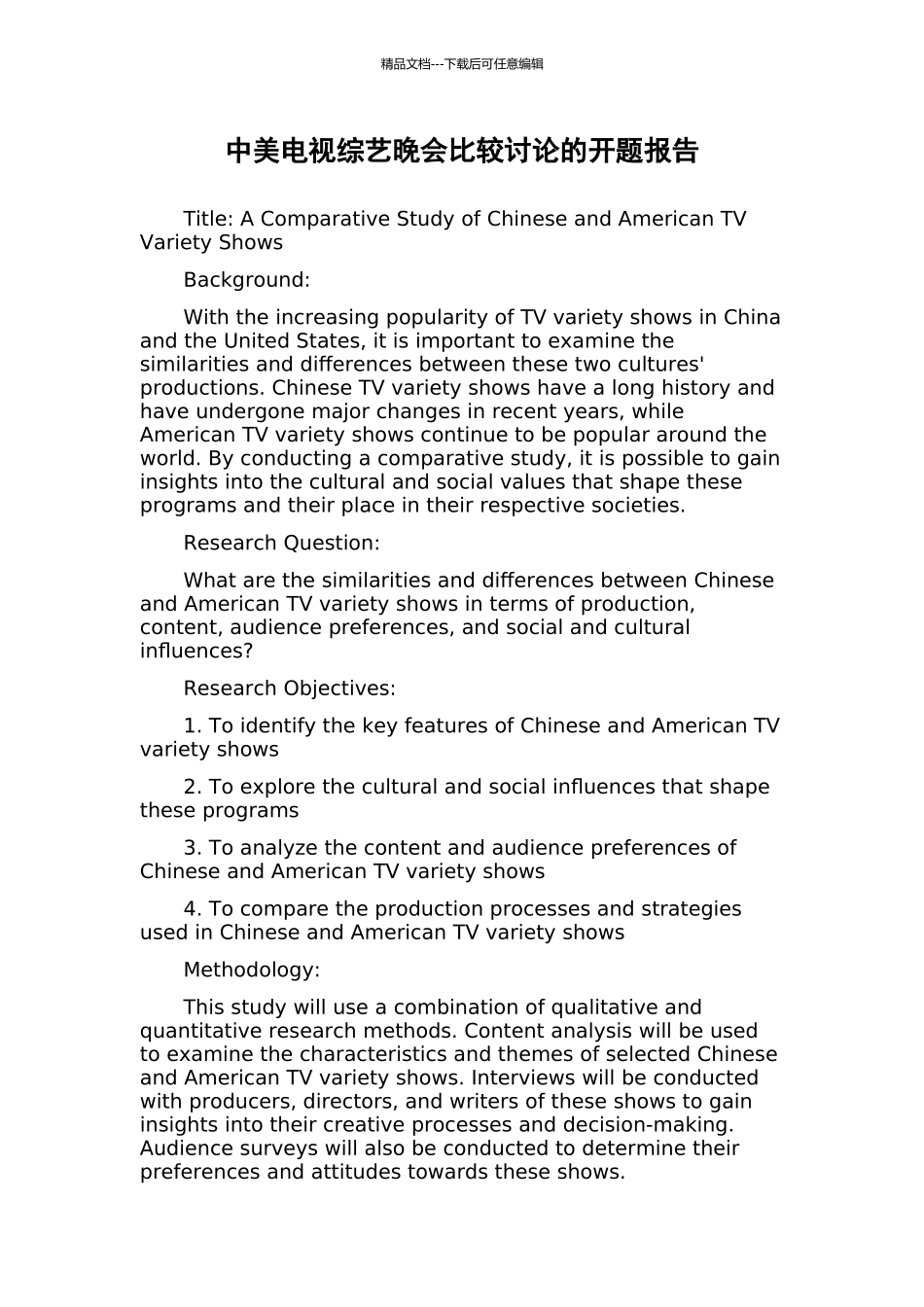精品文档---下载后可任意编辑中美电视综艺晚会比较讨论的开题报告Title: A Comparative Study of Chinese and American TV Variety ShowsBackground:With the increasing popularity of TV variety shows in China and the United States, it is important to examine the similarities and differences between these two cultures' productions. Chinese TV variety shows have a long history and have undergone major changes in recent years, while American TV variety shows continue to be popular around the world. By conducting a comparative study, it is possible to gain insights into the cultural and social values that shape these programs and their place in their respective societies.Research Question:What are the similarities and differences between Chinese and American TV variety shows in terms of production, content, audience preferences, and social and cultural influences?Research Objectives:1. To identify the key features of Chinese and American TV variety shows2. To explore the cultural and social influences that shape these programs3. To analyze the content and audience preferences of Chinese and American TV variety shows4. To compare the production processes and strategies used in Chinese and American TV variety showsMethodology:This study will use a combination of qualitative and quantitative research methods. Content analysis will be used to examine the characteristics and themes of selected Chinese and American TV variety shows. Interviews will be conducted with producers, directors, and writers of these shows to gain insights into their creative processes and decision-making. Audience surveys will also be conducted to determine their preferences and attitudes towards these shows.精品文档---下载后可任意编辑Expected Results:This study will provide a deeper understanding of the similarities and differences between Chinese and American TV variety shows. By examining the cultural and social influences, content, and production processes, this study will contribute to the study of cross-cultural media as well as the development of TV variety shows in China and the United States.

